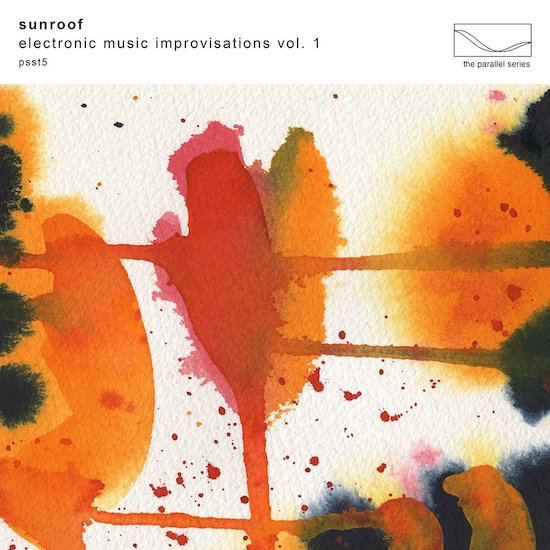Sunroof is the collaborative project between Daniel Miller, founder of Mute and Producer Gareth Jones, known for his work with Depeche Mode amongst many others. The project has existed for a long time primarily as a name for their remix work which includes a superb take on Neu!’s ‘Hero’ from a Homage compilation from 2008. Electronic Music Improvisations Vol 1 is their first album proper though, which seems insane given how long they’ve been working together, the origins of the collaboration dating all the way back to after-hours studio experiments while recording Depeche Mode’s Construction Time Again in 1982.
Both men have excellent credentials, and Miller in particular is a go to authority in seemingly all documentary efforts about synthesis and its history. Indeed, Mute is arguably one the most significant record labels ever, turning out consistently innovative and high-quality popular music for the last forty-two years. Jones’s career too reads like a who’s who of credibility, including credits for Nick Cave, John Foxx, Wire, These New Puritans, and Grizzly Bear. There is a strong sense then, that we are in safe hands here.
What is striking here, given the weight of the context, is the apparent informality and carefree playfulness of this collection. This is not to say that it is creatively unambitious, but that there is a tangible feeling of pleasure running through the work. This is music that would have happened with entirely the same motives and outcomes regardless of any potential audience, and I view that as not just a pleasing thing, but an important one. Musicians are pressured so violently now by the snaking desires of the industry and the grotesque treadmill of promotion, that the joy and exploratory discovery of music making can sometimes feel like a forlorn hope. It’s easy to forget the infectious satisfaction we can get from a proximity to happy musicians in the moment of creation.
There is a simple manifesto here: modular synth improvisations that are short (no long scale freeform jams) and had to be finished by the end of each session. As such, each track is titled simply with its date. My understanding is that they each used 7U travel cases to work from (pretty small and basic by Eurorack standards), and recorded just the stereo output of each, so the majority of mixing etc. is done in real time, which again speaks to the wonderful, clipped simplicity of the project. In a recent interview on Tim Held’s Podular Modcast, Jones described the process of working on modular synths as a “shamanic event” which conjures all sorts of notions of ritual, magic, and shifted and trancelike mental states, and it’s an idea I can’t let go of. The idea of these machines catalysing an animist experience is a delicious paradox.
The music itself speaks to the history of both participants and the history of electronic music. There is a wilful relationship with both past and present that runs throughout. There are the shapes of previous and present pioneers ghosting their way into the sequences and musical gestures. Daphne Oram is here, Delia Derbyshire, Martin Gore, Juan Atkins, Morton Subotnick, Todd Barton. It is electronic music unencumbered by genre rules and the specificity of signification. It is at once completely familiar and pleasingly fresh. The Eurorack format makes this kind of thing uniquely possible in the right hands, with constant timbral and sonic innovations within the parameters of synthesis persistently eroding the constraints of east coast and west coast philosophies. Sunroof understand this at a fundamental level, and they move deftly from the Buchla-like wave shaped drones of ’30.5.19’ through Moog-esque pitch quantised sequence-led pieces like ’18.6.19’. These different approaches to synths collide and meld often on the album, and the introduction of more recent sounding modulation and digitally based modules renew and invigorate the timbral possibilities. Sometimes tonal, sometimes not, we weave within and without the worlds of the Radiophonic Workshop, classic synthpop, contemporary ambient, and experimental music as the last seventy years of technology-shaped music co-exist temporarily in one place. And it’s a place of joy, and of play. I love this album precisely for that. It says ‘look how fun and beautiful all this stuff is’ and lets you in to paddle around in its own temporal pond. Certainly as fun to make is it is to hear and absolutely deserving of your engagement. Neither musician has anything to prove and as such, the outcome feels more and more like a gift with every listen.



